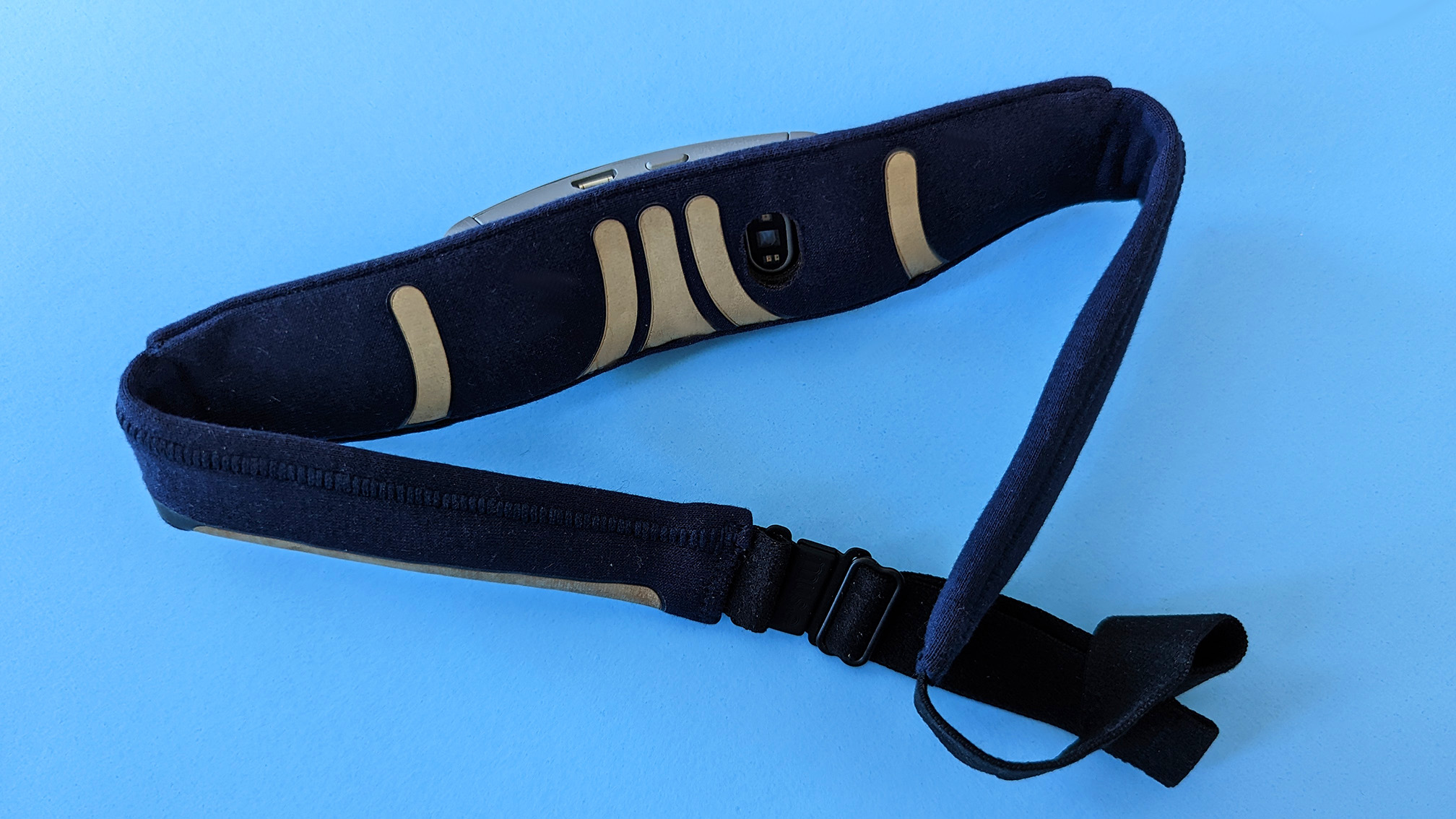'ZDNET Recommends': What exactly does it mean?
ZDNET's recommendations are based on many hours of testing, research, and comparison shopping. We gather data from the best available sources, including vendor and retailer listings as well as other relevant and independent reviews sites. And we pore over customer reviews to find out what matters to real people who already own and use the products and services we’re assessing.
When you click through from our site to a retailer and buy a product or service, we may earn affiliate commissions. This helps support our work, but does not affect what we cover or how, and it does not affect the price you pay. Neither ZDNET nor the author are compensated for these independent reviews. Indeed, we follow strict guidelines that ensure our editorial content is never influenced by advertisers.
ZDNET's editorial team writes on behalf of you, our reader. Our goal is to deliver the most accurate information and the most knowledgeable advice possible in order to help you make smarter buying decisions on tech gear and a wide array of products and services. Our editors thoroughly review and fact-check every article to ensure that our content meets the highest standards. If we have made an error or published misleading information, we will correct or clarify the article. If you see inaccuracies in our content, please report the mistake via this form.
I slept with a meditation headband. Here's why you should, too


Muse S (2nd Gen) headband
pros and cons
- Extensive suite of guided and unguided meditations
- Brain sensing and app combine to make meditation a habit
- Detailed sleep tracking data
- Lengthy connection setup every time
- Premium subscription is required to leverage all the technology
- False positive brain sensing
We all know meditation has an array of benefits: physical, mental, and all the good stuff in between. But meditation is a practice, not just a "quick fix." Being the antithesis of today's instant-gratification culture, it's certainly hard to still your mind and body, especially when results are not immediate.
InteraXon's Muse (2nd Gen) headband has the fix; it integrates a mix of employed electroencephalography (EEG) technology for built-in brain sensors that provide after-meditation feedback. Combined with the app's goal-based meditation exercises, the accessory has the potential to turn the abstract practice of meditating into a more concrete exercise. I've been testing the wearable for the past week and while the Muse has no doubt kept me accountable, I still wonder if the sensors are legit or simply an expensive placebo.
Specifications
Material | Nylon |
Head sizes | 46-63 cm diameter |
Sensor type | Wearable EEG, PPG, Gyroscope, Accelerometer, Pulse Oximetry, and Smart-Fade technologies |
Battery life | 10 hours |
Charging | Micro USB port; LED indicator |
Compatible Devices | Smartphones with iOS 12.2 or higher and Android 8 or higher |
Connectivity | Bluetooth 4.2 |
Color | Midnight Blue |
Price |
Design and fit
The Muse S is soft and lightweight, which is impressive given that there's a brain sensor pod at the center. After I adjusted the straps and clasped the magnetic buckles together around my neck -- like a necklace, I slid the band up to my forehead. To my surprise, the sensor pod didn't dig into my forehead. And even though the headband has a resemblance to a headlamp, I found the materials relatively flexible when I needed to make adjustments.
The Muse S headband's subtle looks make it a fitting meditation device.
Before I get into the meditation practices, it's worth noting that the Muse S also has sleep-tracking technology, making the headband just as applicable for all-night wear. While I'm no stranger to wearing tech to bed, I did wake up from the pressure building up on my forehead and the back of my ears after a few hours into my sleep. If you sleep with an eye sleep mask, sleeping with the Muse headband is a similar sensation but with a thicker fabric that sinks deeper behind the ear. Loosening the headband eases the build-up, but it also renders the sensors useless.
Review: Do sleeping earbuds actually work? I tested the latest pair on the market
Positioning woes
The headband has six sensor points responsible for tracking your heart rate, breathing, and brain activity. Once the headband is in place and you're ready to start your meditation, you simply pair your smartphone with the app and choose your desired meditation. What's not so simple is making sure that the headband is fitted in the right place for the sensors to function properly.
Before every meditation session, you have to pass a Signal Quality Check to ensure that all six sensors are connected. This process often takes a while and is a game of trial and error.
Unfortunately, every meditation session started with a "Signal Quality Check" that took as long as five minutes to calibrate the sensors. The unfortunate part is that not every check is guaranteed success, especially with the ones behind your ears. If you use meditation as a natural remedy when you're in a flustered state, I don't expect the constant readjustment here to make things any better.
I will say that once all the sensors are in place and pass the signal check, you're all set. As long as you don't touch the headband once you start your practice, then the sensors will stay in place and track accurately.
More: Best meditation apps
Muse app: Basic vs Premium
Once you get the green light to start using the headband, there are over 500 different unguided, guided, and experiential meditation routines to choose from. You can choose a meditation based on your mood or a specific area (breath, mind, heart, etc.) you'd like to focus on.
Despite its extensive suite, the app's interface is simple and easy to navigate, while saving your previous meditations to your library so there's less perusing after you've found your favorites.
However, be warned that without Muse's $3.99 monthly premium subscription, you'll only be able to access 39 options with the basic account. While the free version is fairly expansive, especially if you are just starting with meditation, the premium plan is a great option for those who like more structure in their routines and/or want to layer the audio feedback from the app with that of another. For example, you may prefer the white noise playlist from Spotify and want to have that running in the background.
Meditating with the headband
While wearing an Apple Watch doesn't permanently make you better at working out, the idea of closing your rings is enough to push you to finish that last sprint or lift. The same phenomenon is true while meditating with a brain-sensing headband.
Knowing that the Muse S was monitoring my vitals during a meditation session encouraged me to stay still, take deep breaths, and actually try to relax. After a few sessions, my stillness became a habit.
The Muse app's interface is fairly navigable. While the graphs are detailed, there can be false meditation positives.
Still, looking at my data at the beginning of my use (right image), I was surprised at how much my mind wandered and how low my relaxation levels were when I first started to do meditations. But with more practice, my numbers reflected my efforts to remain still, both physically and mentally.
Unlike other wearable apps, you can also access the app without the headband being connected to your phone. So, you can look at the well-organized graphs to see your physiological trends at any time.
The only real issue that I had with the app experience was that even when I took off my headband, there were moments when the headband would continue to track and log data. Obviously, the false positive data is impractical and interferes with the overall metrics of my health, but at least I know more about how stressed my bedsheet is now.
In terms of the media content within the app, there are both guided and unguided meditations. I mostly opted for the former, finding it easier to stay present with someone narrating. I appreciated that every instructor's voice had a sincere, serene tone rather than sounding theatrical or robotic.
If you're more comfortable with unguided meditation, there are plenty of unguided meditations that play relaxing soundscapes instead, like those you'd find on a white noise machine. I tried the Crystal Cavern track and found the flow of water peaceful to the ears and mind.
More: This wearable actively helps you relax and sleep better
The Muse S (2nd Gen) is malleable and soft, with light-colored sensors around the ears and a sensing knob in the middle.
Sleeping with the headband
Like its predecessor and much of the wearable market, the Muse S incorporates sleep-tracking data. These insights include the start and endpoints, as well as the duration of your sleep states (light, deep, and REM). Naturally, users can take these points and modify their sleep habits accordingly.
My favorite sleep feature, however, is the digital sleeping pill. The "digital pill" refers to how the headband coordinates your meditation audio -- whether that's music, a narration, or soundscape -- to the different phases of your sleep. For example, the audio will lull you to sleep at the start of your slumber by gradually lowering in volume. And by the middle of the night, if and when you suddenly wake up, the headband sensors will detect the response and play audio again to ease you back into sleep.
Also: Best air mattresses to help your sleep
As someone who sometimes relies on actual sleeping pills, I was both reasonably skeptical and intrigued by the feature. To my surprise, my doubt was quickly exonerated. With the digital sleeping pill in use, I fell right to sleep -- and a deep one at that, according to the tracking feature.
There are two accented sensor bars on both sides of the headband.
Even if I took off the headband in the middle of the night, I felt much more relaxed in my new bedtime ritual. If you're someone who often lets worries of the day climb into bed with you, I'd highly advise using the digital sleeping pill. It's not meant to replace your prescriptions, but I can vouch that it's an effective and natural relaxant.
Battery life
As far as battery life goes, while I have been able to get a full night's sleep with the headband off a single charge, the charging itself takes almost all day. So, I do have to prep the Muse S hours before I'm about to sleep. Besides that, the use of MicroUSB instead of the more modernized USB-C is disappointing. It's 2022!
Bottom Line
The Muse S (2nd Gen) turns a traditionally abstract practice into a performance-driven culture. While getting the sensors to read on command can be a bit tricky, using the headband itself feels natural enough to not disturb your meditation or sleep. As for the app, you'll want to opt for the premium subscription for the most robust and optimal experience, though I'd advise feeling out the initial batch of 39 meditation routines first before you commit.